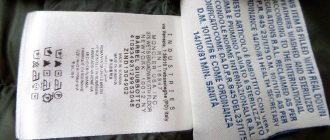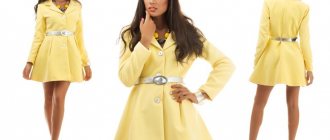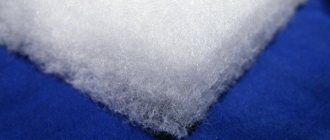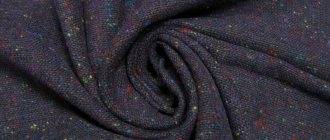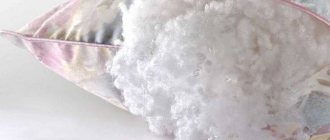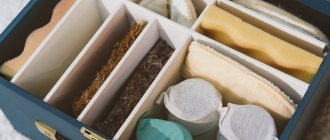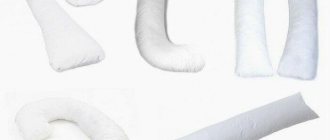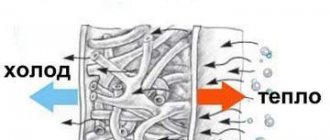Production
The total number of processing stages and operations that fluff goes through is about eighteen.
- The first stage is considered to be raising waterfowl.
- Down is collected from a living bird at a certain period.
- After collection, it is weighed and the quality and degree of moisture are determined, then dried, dusted, sorted and down and feather mixtures are made.
- Then these mixtures are washed in machines with special detergents, squeezed out in centrifuges to a moisture content of 45-50%, and fed into drying machines, where they are finally dried with hot air (at a temperature of 80-120 degrees). Sometimes hot steam cleaning is used.
- Using a fan, the fluff is fed into a collector and pressed into bales.
On a note
All raw materials must be tested and veterinary certificates are issued for them. If the fluff comes from disadvantaged areas where poultry diseases occur, it undergoes mandatory disinfection.
Good down cannot be ruined by washing
In order for the fluff to maintain its volume, it must be clean. Due to contamination, the beards of the fuzz stick together and lose their elasticity, and with them their warming properties.
Down is not afraid of washing, because it is supplied exclusively by waterfowl. Before becoming a filling for a down jacket, down undergoes a serious test with water, a special soap composition and high temperature. This procedure for the initial processing of raw materials allows you to get rid of dust and parasites, which is very important for people suffering from allergies.
Down that has undergone high-quality initial processing is easy to care for at home; the product can withstand machine washing.
The only limitation is hard water and aggressive detergents that dissolve organic matter. Therefore, it is better to choose special detergents for washing down jackets.
Categories and properties of down and feather filler
The most expensive type of filler is the one that contains the most fluff - 99-100%. It is called Exclusive quality down and has the following properties:
- very durable;
- has low thermal conductivity - the fluffs come into contact with each other and create air layers, forming a barrier that does not let in either heat or cold;
- hygroscopic - capable of absorbing large amounts of moisture and evaporating it into the environment;
- has very low weight - light and delicate down compared to all other fillers, including synthetic ones, has a better weight-to-warmth ratio;
- breathable - ensures good air circulation;
- non-felt - the fluffs do not fall off, as they are very strong, flexible and elastic.
When adding a feather to such a filler, the category decreases. Filling with a down to feather ratio of 95% to 5% belongs to the Premium category, 70% to 30% to the Highest category, 50% to 50% to the First category, 30% to 70% to the Second category.
The more feathers added, the worse the properties of the filler. If small or crushed feathers from killed poultry are added to it (as a waste product from meat production), the filler will have higher thermal conductivity, low hygroscopicity, greater weight and fallability. It is also necessarily treated with chemicals.
FEEL POWER
There is a special indicator of the quality of down and feather filler - the FEEL POWER index (the higher the better).
It shows how resilient the fluff is and how capable it is of recovering from compression.
If the index value is 750 or higher, this is fluff of exclusive quality, it is collected manually and only in the spring from the chest part of the bird, which is constantly in selective housing conditions.
An indicator below 400 indicates a very low quality of the filler; such fluff was collected from a dead bird.
On a note
The degree of elasticity also determines how many degrees the insulation effectively protects from the cold. For example, duck down in a down jacket with a high FEEL POWER index will provide comfort down to minus 30-35 degrees and even lower.
Raw materials
Gaga
The most valuable is considered to be the down of the northern eider bird, which lives in the Arctic climate of Iceland (eider down is also collected in Canada, Denmark, Finland and Norway). It is collected by hand directly from the nests. She plucks it out of herself to warm her offspring with the warmth of her skin.
All subsequent stages of processing are also carried out manually, since the fluffs have the highest degree of adhesion, and in the filled product they form a dense elastic layer that does not change shape during use. Products with eider down are incredibly light, airy and warm. This type of filler is the highest quality and most expensive.
Goose feather
Next comes goose down, which is also divided into categories. The most valuable is the white goose, followed by the gray goose. Its quality depends on both the breed of bird and the habitat: the harsher the climate in which the goose lives, the higher the quality. Canadian is considered the best. Next come the European breeds: Hungarian, Italian, North German and others.
The down of birds that live in harsh conditions, but fly to countries with warm climates (Turkey, China, Germany) for the winter, is of less quality.
Duck
Duck down and feathers are less valuable compared to goose feathers due to the shape of the feather - duck feathers are not curved like a goose's, but straight, therefore in finished products they lie denser and form fewer air spaces, therefore, such products are less warm and heavier .
In addition, duck plumage has a specific smell and requires additional processing. Canadian duck down is of very high quality.
On a note
White duck down is considered a universal insulation material. It is interesting that the raw materials for it are collected from nests, since this species of duck is listed in the Red Book. Birds prepare nests for their chicks by lining the bottom with down, which they pluck from the abdomen and chest. They cover the laid eggs with the same down.
Chicken feather as a filler
It only has a feather. Used for the production of goods in the lowest price segment.
Read about: canvas-stitched fabric: practicality and functionality of non-woven material
What is the difference between down and feather
The pen is based on a long shaft with a rigid edge - the same part that, before the advent of Parker and ErichKrause, served as a writing utensil for humans.
Above the edge, beards firmly interlocked with each other diverge in both directions, which merge into a flat fan, sometimes of an outlandish color.
The structure of the down is somewhat different: the existing rod is so small, and the edge is so soft that it is almost impossible to see it without a magnifying glass and touch it with your fingers. But the thin beard threads attached to it along their entire length are endowed with complete freedom. The most delicate fan made up of them seems small, subject to every breath of the breeze.
However, humility is deceptive; beards are distinguished by their exceptionally stubborn disposition. So, a down jacket made from relatively thin fabric can be easily placed in a handbag. Even if it is heavily crumpled, it straightens out instantly.
This happens precisely due to the elasticity of the beards competing for space in the down bags. By repelling each other, they form a complex system of tiny air channels, or simply an air cushion, which provides unsurpassed thermal insulation. This does not create a greenhouse effect: the skin, protected from the cold by down, breathes.
Down feathers are also endowed with the same freely swaying beards - something between a feather and down.
Down feathers grow among the integumentary feathers and, like down, serve as thermal insulation for birds. However, unlike down, a down feather is equipped with a noticeably hard shaft and a thin, but rather prickly edge. Therefore, it is valued much less than fluff.
Lots of feathers, not enough fluff
Down makes up less than a fifth of a bird's plumage. So the “clothes” of an average goose (the most popular supplier of raw materials for down jackets) weigh about 300 grams, of which only 18% is pure down. You can get about the same amount of down feathers from one bird. But small feathers (the lowest-grade raw material for down jackets) are in abundance - 52%.
Most often, Italian and Finnish winter clothing manufacturers use a mixture of down and down feathers. The proportion of content of both is usually indicated as a fraction on the product label.
To reduce the cost, in addition to down feathers, the Chinese also use ordinary small feathers, which they also inform buyers about on the label.
One thing is invariable: the higher the down content in a product, the warmer and more durable it is, and, therefore, more expensive.
White birds from the north have the best down
For northern birds, down is a guarantee of survival. The harsher the climate in their habitat, the warmer down they grow.
To obtain the highest quality raw materials, down jacket manufacturers create their own poultry farms in difficult northern conditions. And although the meat of these birds is quite edible, birds are raised on such farms precisely for the sake of their fluff.
That is, the efforts of breeders are aimed not at accelerated weight gain, but at enhanced insulation.
It is noteworthy that there is absolutely no “non-white population” on such poultry farms. White fluff is the most expensive because it is universal, unlike its dark counterpart, it is suitable even for sewing products from light, light fabric.
Intravital or post-mortem pinching?
It is noteworthy that in the production of wool, the most valuable raw materials are those obtained from young animals. With down it's the opposite. The fluff of a young bird is not yet fully formed. It becomes suitable for use no earlier than the bird’s first molt. It is on observing the molting seasons that the lifetime plucking of geese is based.
In this case, the fluff is removed only from the lower abdomen, front of the back and lower part of the neck, after which the bird, fairly plucked but not killed, is sent to grow a new one. The quality of this down is excellent, but the price is exorbitant.
In addition, only intravital manual plucking is painless for the bird, when the farmer carefully removes only the ripe, withered plumage.
They tried to speed up the process with the help of special machines, but civilized European society rebelled against such a barbaric invention that brought monstrous suffering to birds. As a result, most well-known manufacturers have almost completely abandoned down obtained from live birds.
Nowadays, they mainly use raw materials from post-mortem pinching of adult birds, which allows them to maintain a balance between price and quality. As a result, not only the elite, but also the largest middle class can afford a good down jacket from famous manufacturers.
Elasticity is the main advantage of down
The durability, warmth and lightness of down is judged by its elastic properties - this is the most important quality criterion. It is determined using the coefficient or index Fill Power
, which indicates how much air the fluff can hold.
There are European and American determination systems (the weight of the fluff and the volume of the vessel differ, but the principle is the same). A portion of fluff is placed in a measuring cylinder at a certain humidity and temperature and kept under pressure for several days.
After the load is removed, measurements are taken to see how high the fluff rose after compression.
The results of calculations using a special formula are usually indicated on the product label; the higher the number, the more elastic, and therefore more expensive, the down used in it.
American Fill Power index system
Application and care
The down-feather mixture is used as a filler for those products that are intended as insulation. These are winter outerwear (down jackets, jackets, coats) and bedding (blankets and pillows).
Cloth
For men's, women's and children's down jackets and overalls, down is additionally treated with water-repellent compounds. Usually the filler of the Highest category (70/30%) is used. Such clothes are very light, but protect well from winter frosts.
Modern down jackets are sewn in such a way that fluff and feathers do not come out through the layer of outer fabric. To do this, the filler is placed in special fabric bags, additional cushioning fabric is used, and the seams used to quilt the product are treated with special compounds. To prevent such a down jacket from letting in the cold in the quilting areas, the bags are overlapped.
Thus, a suit with down filling has the following pros and cons. Their main advantage is lightness, durability, and low thermal conductivity of down. However, natural insulation requires additional and special care; it can cause allergic reactions.
Down, feather or synthetic: choosing outerwear for the winter
What insulation is best for winter clothes?
Insulation materials can be natural or synthetic. Modern insulation materials are thin and dense, allow air to pass through well and create a long-lasting feeling of comfort at different temperature ranges. Natural down and feathers of duck, goose, and eider are used as filler. Fillers made from synthetic fibers are also used: shelter, holofiber, synthetic fluff, isosoft, thinsulate.
Some manufacturers mix synthetic fibers or wool with real down, creating a combined duck or goose down insulation. Different quantitative ratios of down and feathers also affect thermal insulation.
According to some manufacturers, it is becoming increasingly difficult to guarantee the stable quality of down: the rate of poultry rearing is increasing, and down simply does not have time to acquire its natural properties.
Hence the growing demand for technologies that make it possible to stabilize the quality of down by adding various composite materials related to its structure. In addition, synthetic materials often allow for the implementation of characteristics that are unattainable when using natural materials.
For example, synthetic fiber systems in the form of sheets or individual fibrous components make it possible to provide not only the proper level of thermal insulation in any climatic conditions, but also “intelligent” thermoregulation of the underwear space, while ensuring ease of maintenance and operation.
What is the difference between synthetics and natural filler?
Down jackets are susceptible to moisture and are difficult to clean. You need to understand that when purchasing a jacket with natural filling, it should be possible to take it to the dry cleaner or follow the washing rules (if there are any for this product), then the jacket will last a long time. During wear, fuzz may appear from the seams and even through the surface of the fabric. The cost of such a product varies widely from the middle to high price segment. Another natural filler, sheepskin, also has its pros and cons. Sheepskin is hypoallergenic and will keep you warm in cold weather, but a product with such filling weighs more than down or synthetics, requires special care and is in a higher price segment. Some types of artificial filler have a high degree of migration and caking: for example, synthetic winterizer. Such a product will soon lose its consumer characteristics. This must be taken into account when purchasing. The price segment of such products is low. New artificial filler materials have higher quality indicators. They also have low density and light weight, while being resistant to moisture. An example of such a filler is holofiber. A jacket with it can be found in the middle price segment. Some new types of insulation have a fairly high cost compared even to natural down. For example, Thinsulate - this filler has good air exchange and is lightweight. Such products are in the high price segment.
Does quality depend on price?
“The price of a product with natural filler is significantly higher than with synthetic filler, but this does not guarantee that the quality will be excellent. Products with synthetic filling are often suitable for mild frosts, but for more severe frosts, it is better to use clothes with natural insulation,” notes Dmitry Guzov
. Materials made from recovered (recycled) materials cannot be distinguished at first glance from those made from virgin fibers, which are 15–20% more expensive. This is why such outerwear made from recycled materials can cost less than the final product made from virgin raw materials. The use of recycled materials, as well as the recycling of refurbished products, is gaining momentum throughout the world. Many outdoor companies use only recycled materials in production; some companies even use recycled fluff. Of course, the quality of secondary raw materials is inferior in its characteristics to primary ones.
How to care for a down jacket made of down and feathers
It is recommended to have the down jacket cleaned, but machine washing with liquid detergent on a delicate cycle is also allowed. To prevent fluff from forming clumps, three tennis balls are placed in the washing machine.
You should not wring out or dry the product in a machine; you should allow the water to drain by laying the down jacket on a horizontal mesh or grid. Then dry with a fan or hair dryer.
Bed dress
Pillows and blankets with such natural filling are very light, soft and warm. They keep their shape well and do not fall off. It is recommended to fluff your pillows by hand every morning (not in the evening).
Care
For such products, dry cleaning in specialized institutions is recommended. You can wash it yourself in a machine at a temperature of 40-60 degrees. Only high quality items are washed. In cheap ones, the filler is more fragile and can be damaged.
Do not dry in direct sunlight or on a radiator. It is best to do this in a well-ventilated area or outside in hot weather (only in the shade), shaking occasionally.
Useful
Down duvets and pillows are contraindicated for allergy sufferers and asthmatics, but many modern manufacturers carry out special anti-allergic treatment of raw materials.
Care for down and feather pillows in the video:
The ratio of down and feathers in a pillow
A pillow made of 100% down is an expensive luxury. To give some rigidity to the product, in order to reduce its cost, down is mixed in various proportions with small feathers. The higher the content of the latter in the filler, the stiffer, taller and more voluminous the pillow will be and the lower its price.
Depending on the percentage of down and feather, pillows are divided into down, down-feather and feather. The former should contain at least 85% down and 15% feathers; the second ones contain down and feathers by half - 50% each; still others are filled primarily with a pen - more than half of the contents.
In Russia, the ratio of down and feathers is regulated by the provisions of GOST 30332-2015 “Feather and down products”. Pillows are classified according to their material content in this way.
- Down category "Extra" - feather content from 5 to 10%. The products are light, fluffy, low, suitable for people of fragile build;
- Category I – up to 20% of the feather. Low, light, comfortable pillow.
- II category of filler – at least 70% fluff. The pillow is of medium elasticity and easily adapts to the contours of the head.
- Semi-down – the filler contains from 40 to 70% feathers. These products are elastic, tall, hold their shape well, are more rigid, and are the most budget option. Suitable for large, heavy people.
European standards classify filler according to down and feather content as follows:
- Premium down – 90% – white only;
- highest category – fluff content 70-90% (gray or white);
- first category - from 50 to 70% (gray or white).
A pillow with more down content is better in quality, but adding feathers will make the product larger, taller, stiffer, and most importantly - much cheaper. The mixed version has good orthopedic properties and high ventilation rates.
How to determine quality
In order to understand whether the filling in a product is of high quality, it is not enough to know the country of manufacture of clothing or bedding. Much depends on the country where the raw materials were produced, but there is no such information on the label.
You can visually check the quality by pressing on the product and seeing how quickly it returns to shape. If high-quality raw materials were used, the shape is restored by 50-70% in 15 seconds, and completely in 2-3 minutes.
Service life
Clothes and blankets filled with goose down can last up to 20 years. But it is recommended to change bedding (pillows and blankets) every few years (or clean it once a year), as they absorb all the substances that are released through human skin.
Thanks to modern technologies, down and feather filling is a very high-quality and environmentally friendly material. With proper care, products with it will last a very long time.
© 2021 textiletrend.ru
